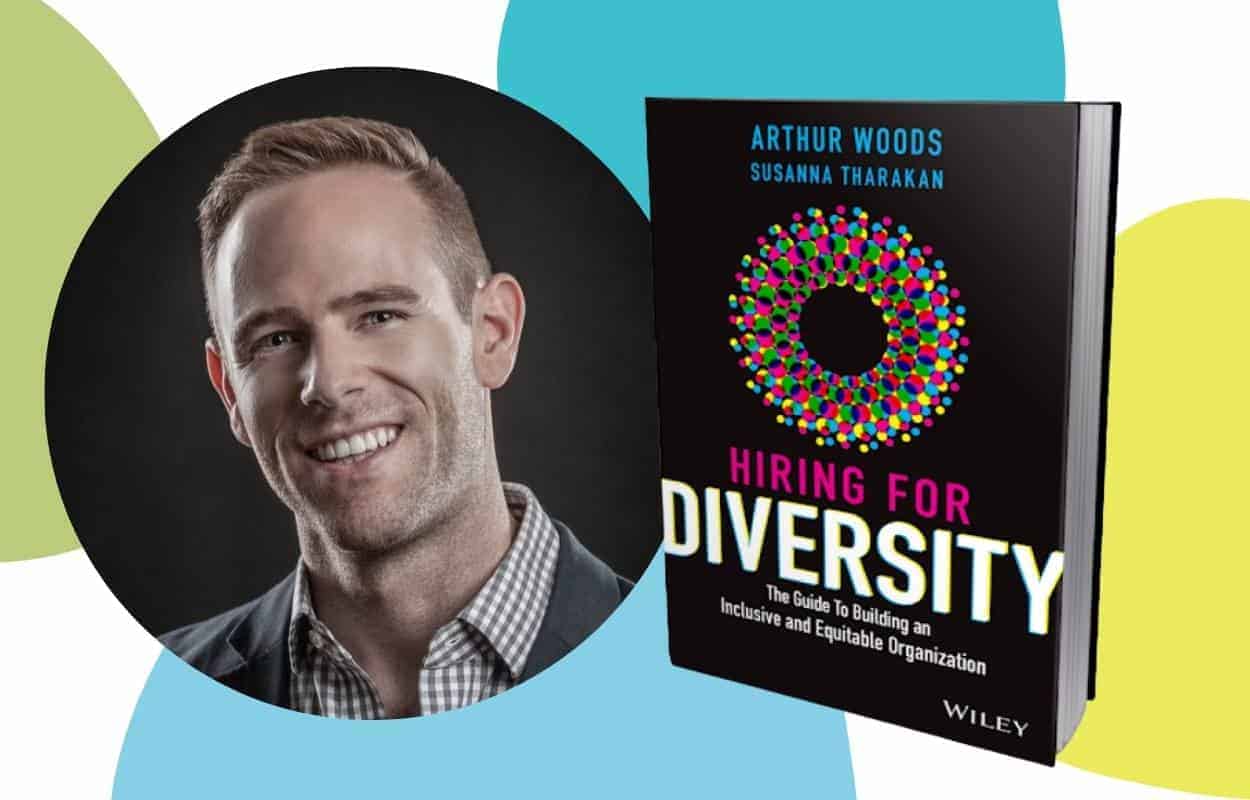What AI actually means for marketers right now
Fears about AI taking over the marketing industry may be overblown (for now). But the latest generative tools can help—if we use them wisely.

If it feels like everyone you know just started taking AI seriously (and trying the newest platforms for themselves)—you’re probably not wrong. As marketers, many of us are trying to figure out whether to polish our resumes and rethink our career paths, or befriend the so-called AI enemy and use it to our benefit.
To learn more about how marketers can leverage AI today, I went straight to the source: According to ChatGPT, marketers use AI to “automate processes, analyze data, and optimize strategies for improved customer engagement and personalization.”
…But most of that didn’t sound new, or wildly revolutionary.
Probably because it’s not.
Take for example, Google’s ubiquitous marketing tools, Google Ads (formerly AdWords) and Google Analytics. The former relies on AI-based algorithms to manage its immense network of paid media, while the latter provides access to in-depth customer data. CRM platforms also use AI to improve our interactions with consumers, allowing for a more personalized, data-driven approach to marketing, while other AI technologies have helped us automate traditionally time-consuming work like customer segmentation and email marketing.
From Google Ads to Salesforce, AI algorithms have been a crucial component of the move towards data-led digital marketing. If these kinds of AI tools have been available and (widely used) for years—why does it matter more now?
Where did all the hype come from?
Though AI itself isn’t a brand new innovation, the much anticipated release of ChatGPT in late 2022 followed a series of other groundbreaking releases in generative AI from the prior year (AlphaGo and GPT-3, to name a few). The ability for AI to now produce text, images, and other content added to the buzz created by other industries.
AI suddenly became more accessible, approachable, and acceptable—almost overnight. As marketers tried these new tools for themselves, countless examples of AI-generated copy and visuals began popping up in the media and in industry-wide conversations.
In many cases, the text coming from ChatGPT was indistinguishable from copy that came from a human; the same goes for the visuals generated by tools like Midjourney and Adobe Firefly.
With an infinite amount of information instantly available, AI platforms were suddenly taking many things we do as marketers, and doing them faster—and occasionally better.
What marketers really think about AI
While the excitement about AI capabilities and technology is genuine, some of the concern around its potential to alter our industry may be overblown—at least for now. After doing his own research, DTC growth marketer Kevin Miller doubts AI will “live up to the sweeping paranoia we hear in the media about dissolving jobs or taking over marketing efforts for companies.”
Kathryn Hibbard, a product marketing manager at a Boston-based robotics tech startup also explained that “other industries have so many automation tools—why should marketers be any different?” While she often relies on engineers to explain complicated robotics-related concepts leading up to product launches, she’s recently used AI tools to provide an initial overview of new topics—saving both departments time and helping her create informed, accurate content more quickly.
When testing out new AI tech for himself, Jeff Sugarman, creative director and small agency owner, was initially impressed with the speed at which content was created, but he was also concerned about its quality. While some of the early test content he created with AI was “technically correct” it also felt “dull, boring and superficial.”
How AI can help us create better marketing content (keyword: help)
While marketers have differing opinions on AI, most of us can agree that creating good content takes time—and that’s a luxury many of us lack. With the promise of a blog post or creative product imagery in seconds, the appeal of AI for generating content is huge, particularly for small business owners, lean startup teams, and any marketer who is pressed for time (and really, who isn’t?). When you’re working solo (or with a small team), content can become a very low priority, despite it being crucial for customer engagement.
As a copywriter (a role we’ve been told might be most at risk), Grace Townsley could worry about being replaced. Instead, she views AI as “a tool marketers can use to vastly expand their businesses.” Being a small business owner herself, Grace has found that platforms like Jasper, SurferSEO, and ChatGPT compliment her current workflow. Though she doesn’t have the wide range of talent or resources that some larger organizations might have, AI has helped bridge the gap between her small business and a much larger agency.
And for someone who doesn’t have an office full of co-workers, AI has also “made new forms of content possible,” says Grace. “It’s changed my approach to ideation and development. And it’s freed up my writing brain to focus on value creation.”
It’s not just about the content—it’s also about the time we save
Arguably more important than these content creation capabilities is the time-saving aspect of user-friendly generative AI platforms. From providing background research (in a concise, bulleted summary) to analyzing data, some new AI tools promise a seemingly endless range of time-saving use cases. As more marketers embrace AI, the benefits of these platforms are becoming increasingly more compelling.
While larger organizations provide access to more tools and resources, when it comes to AI, employees at smaller organizations may have an advantage for now. Tools like ChatGPT don’t require budget approvals, an in-depth sales pitch, or vetting by the operations team. Experimenting with these kinds of platforms takes very little effort—and currently cost next to nothing (except for your time . . . beware of getting sucked in—I can speak from experience).
On the flip side, many Fortune 500 companies have limited or banned the use of generative AI for the time being, given all the risks and unknowns.
Considering the costs of generative AI in the marketing industry
As with any new technology, the full extent of the risks related to AI isn’t yet clear. But, during my research, I received numerous anecdotes about varying levels of mistakes (some were comical, some could end up being a serious problem). Here’s what marketers should be thinking about when exploring AI.
Access
Though a majority of the newest marketing-centric generative platforms are free or low cost, it will be interesting to see how AI capabilities are monetized in the future. With options to “upgrade to premium” already popping up, we can pretty safely assume that some of these tools will move toward a paid model.
As creative director Jeff explained, “These services cost money and, at some point, they may become a necessary part of fulfilling a job. Or finding work in the first place. What if you can’t afford it?”
As we continue to adapt to the constantly evolving future of work, it’s important to consider what tools and resources are actually accessible for everyone.
Transparency and intellectual property
At what point do we need to disclose that AI is being used: how much of this is my work, and how much is AI? And how much of it is based on someone else’s original work?
Though many freelance marketers and small business owners have been able to draw these lines themselves, this gets more complicated when dealing with larger organizations, many of which have no policy or process in place yet.
Data security
There have already been horror stories about proprietary company data being leaked through generative AI, so anyone using these tools should consider how information is collected and stored. Organizations need to discuss best practices and planning for policies to be implemented as soon as possible, especially before adopting widespread use of the platforms.
Accuracy
When using AI, you must consider your source. Just like we’ve grown accustomed to doing with any “news” or “facts” that we see on social media, it’s important to vet the information that we’re getting from AI tools. Is it true? Is it accurate? Is it the whole story? When in doubt, get a second opinion. Or third. It’ll take .3 seconds (or less).
Bias
Bias has been a problem with AI algorithms for years and that hasn’t changed with the newest tools. For example, when you search for an image of a “marketing executive” or “financial expert” or “working parent,” who does AI depict? Do the images produced reflect harmful or limiting stereotypes?
It’s essential to think critically about whose point of view is being shared when we use AI-generated content. Not only is there the possibility of perpetuating stereotypes, but as we’ve seen with past uses of AI, there’s also a risk for discrimination against individuals or groups based on protected characteristics such as race, gender, or age.
AI and beyond: what happens next in marketing?
Without using AI tools responsibly, we’re putting our work at risk. However, if we set up the right processes and best practices, these tools have the potential to transform the way we work. As we navigate these uncertain (but exciting) times together, it’s important to weigh the benefits and risks, and create guidelines and procedures to protect yourself, your work, your company, and clients.
Ultimately, the bottom line is that marketers aren’t going anywhere anytime soon. Since you’re still reading and I’m still writing, it looks like we haven’t been replaced by the new wave of AI tech (just yet). Instead of “stealing” our jobs, AI has already helped us become better marketers—sifting through mass amounts of data, identifying important customer patterns, and even writing some of our content. But when words and images matter as much as they do in our industry, no matter how “smart” these platforms get, great marketing should still start and end with us.

.webp)